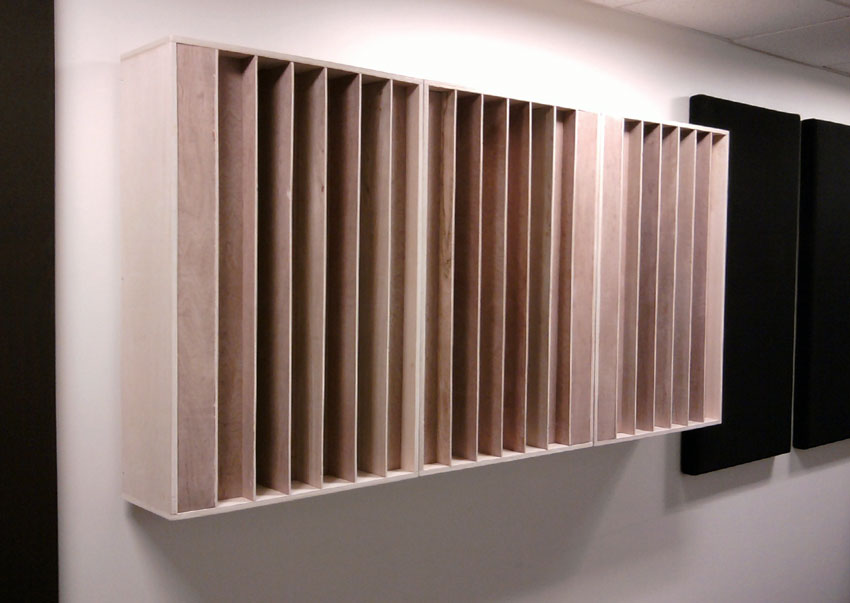Sound Design
This is a collection of sound objects, electro-acoustic ambient pieces and sound design tracks I've produced over the years, as well as a few tools I've developed in Max/MSP for media installations.
Pla-tonic
Pla-tonic is a sculptural, light-sensitive synthesizer in which the frequencies produced by the oscillator associated with one octohedron are used to modulate the frequencies of the oscillator connected to the second. Their light sensitivity makes them controllable by gesture.
Parabolic Mics for Techniques of the Observer
These parabolic microphones were built for a small installation, Techniques of the Observer, and were installed throughout a university arts building in the fashion of security cameras. The snippets of conversation and ambient sound they produced were used to alter the pixel data of two government surveillance training videos in real time.
FourLoop

FourLoop is a custom loop player, built in Max/MSP, which features four discrete channels, each with an individual low-pass filter, bit crusher, volume and pitch control, and an LFO assignable to either a filter or stereo panner. Each channel also has a send to global reverb and adjustments for wet/dry. Most importantly, the panning mode can be toggled from "stereo" to "multichannel", where each sound can be spatialized accross an array of six speakers.
Assorted Tracks
Waveform:PHARMAKON interface

The interface for the PHARMAKON installation allows the exhibition designer to control the levels of incoming audio from three separate "all-band" receivers, the size of the grains in the granular delay, the time and amplitude of the granular delay and the output gain. It also features an adjustable noise gate that reduces the amount of reaction from the system if the amount of environmental electromagnetic "weather" is too frequent or noisy.
Acoustics



In the Fall of 2011, I was contracted by Occidental College's Media Arts and Culture program to design and construct additional acoustic diffusers and absorbers for their sound room. I built two sets of QRD diffusers, as well as a few extra absorber panels, and re-arranged the previous setup to create a more acoustically dynamic space. The absorber panels seen in the photos to either side of the diffusers were pre-existing; I simply re-positioned them to help reduce the standing waves, which were creating far too much reverberation in the room.





